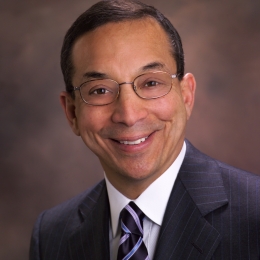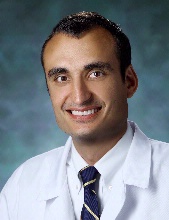 Dr. Richard Boxer
Dr. Richard Boxer
There's more than one way to do a house call. That was the takeaway from a discussion of two very different mobile health initiatives that shared the stage at a panel I moderated this week at the mHealth Summit.
Dr. Richard Boxer, the former chief medical officer of Teladoc, spoke about his new startup Pager, which literally sends doctors to the doors of patients who have called for a doctor via a mobile health app. Verizon's Nancy Green and the University of Rochester's Dr. Ray Dorsey presented on a fully virtual program to provide specialist care to Parkinson's patients in their homes and nursing homes.
"In the 1930s, 40 percent of patient-physician encounters were house calls and in the 1950s 10 percent were," Dorsey said. "There were two factors that led to the demise of the house call. The first was transportation. Transportation became increasingly available and affordable so patients could seek care on their own. The second was advances in diagnostics. We heard about X-Rays, EKGs, blood work, and urinalysis. All those things when they first were developed were tied to the hospital. Now, 70 or 80 years later we’re seeing both those things being disrupted. So transportation’s being disrupted by telecommunications, which increasingly allows us to connect to anyone anywhere, and then point of care diagnostics are letting companies like Pager do X-Rays, EKGs and blood work in people’s homes."
Pager is one of many startups to have called itself an "Uber for doctors", but it may have a greater claim to that label than others: One of the company's founders, Oscar Salazar, was also on Uber's founding team. The company currently operates only in New York, but has plans to expand out to other metropolitan areas. Doctors do an initial consult over the phone to determine what sorts of diagnostic and treatment tools they might need to bring, then show up at the patient's house for the visit.
 Dr. Ray Dorsey
Dr. Ray Dorsey
"What Pager has done is they’ve created bags, basically, that would allow the doctor to do high-tech imaging or lab or evaluation of the patient right at the bedside," Boxer said. "It's not your grandfather or you father’s house call. But the regulatory issues disappear. The main problem with connected health is there are regulatory agencies in different states which demand that you have a face-to-face evaluation. If you, in fact, deliver a doctor to a patient, you have eliminated all the regulatory issues."
In addition to dodging a potential regulatory headache, Boxer says patients also appreciate the face-to-face interaction on a personal, patient satisfaction level.
With Dorsey's Parkinson's interventions, patients don't have that face-to-face contact, but Dorsey said patient satisfaction and effectiveness of treatment are very high. He's about to start in on the third randomized clinical trial for a service that began when an upstate New York nursing home asked if the university could remotely check in with a few of its Parkinson's patients because there was snow on the ground and no specialist in town. That nursing home pilot led to four other nursing homes, which in turn led them to pilot the technology in patient's homes. Now he's recruiting for a nationwide trial.
"Even in the US, which spends 40 percent more on healthcare per capita then any other country in the world, a large number of individuals with Parkinson’s don’t receive appropriate care," Dorsey said. He cited a colleague's research showing that over 40 percent of individuals over 65 with Parkinson’s disease don’t see a neurologist for their care. "The question is 'Does this matter?' and it turns out it does. Those who do not see neurologists for their Parkinson’s are 25 percent more likely to fracture their hip, 25 percent more likely to be placed in a skilled nursing facility, and 20 percent more likely to die. So every day tens of people with Parkinson’s die prematurely because they can’t access care."
Using Verizon for connectivity, the University of Rochester conducts video visits and visual assessments of Parkinson's patients. This saves them the trouble of driving to an appointment, which is a huge concern because late stage Parkinson's sufferers can't safely drive. As a result their frequent appointments sometimes require spouses or caregivers to take time off work. And according to the RCTs, the accuracy of diagnosis and quality of care are comparable to in-person visits.
"It turned out in measures of quality of life, of tremor, of slowness, that outcomes were quite similar," said Dorsey. "And each virtual visit was saving patients and caregivers [an average of] three hours of time and 100 miles of travel."
For the forthcoming national trial, Dorsey says there are already more than 800 people interested in 250 slots, including people around the world who aren't even eligible. The demand for remote Parkinson's care is considerable.
The panelists agreed that the different approaches to bringing care to the patient will shine in different circumstances -- for instance, Pager is focused on acute care while the Parkinson's program is dealing with a chronic disease. In addition, Pager's business model is a little impractical in a rural setting like Alaska, which is where telemedicine historically has found traction.
One way or another though, the house call seems to be making a comeback.














